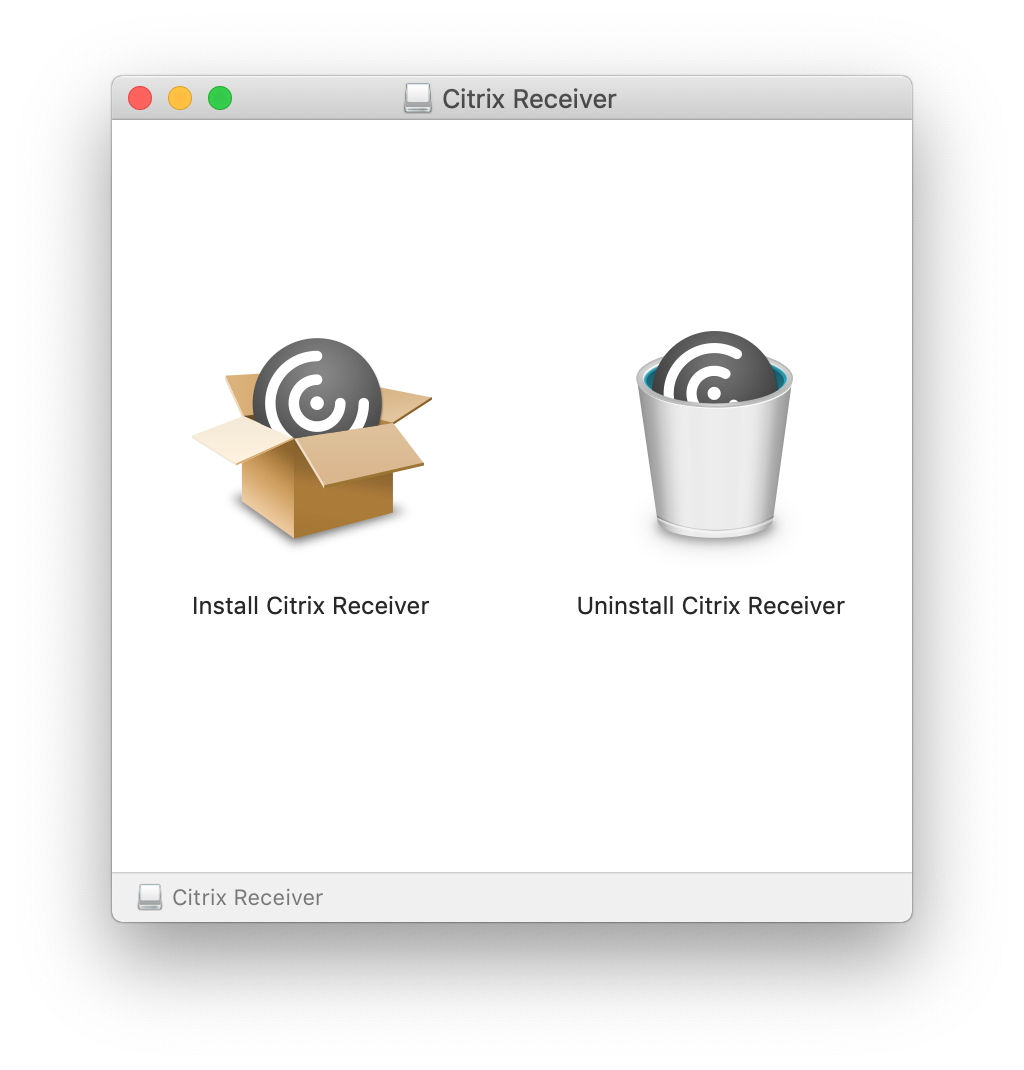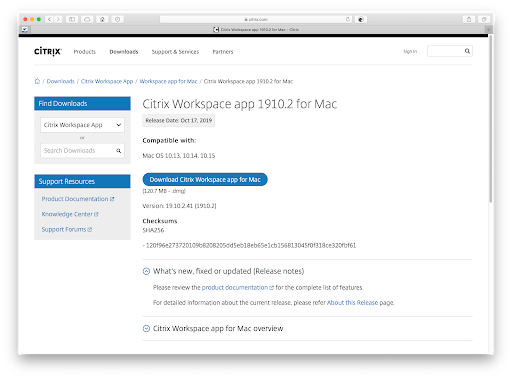

- #CITRIX RECEIVER MAC PROBLEM CHECKING FOR UPDATES HOW TO#
- #CITRIX RECEIVER MAC PROBLEM CHECKING FOR UPDATES INSTALL#
- #CITRIX RECEIVER MAC PROBLEM CHECKING FOR UPDATES DRIVERS#
- #CITRIX RECEIVER MAC PROBLEM CHECKING FOR UPDATES UPDATE#
- #CITRIX RECEIVER MAC PROBLEM CHECKING FOR UPDATES DRIVER#
REG ADD “HKLM\SYSTEM\CurrentControlSet\Control\Terminal Server\WinStations\RDP-Tcp” /v fDisableAudioCapture /t REG_DWORD /d 0 /f
#CITRIX RECEIVER MAC PROBLEM CHECKING FOR UPDATES HOW TO#
… that demonstrated how to configure this for RDS which included an additional registry key to add: Lync deployment: using Virtual Desktops (VDI) Uninstall the Citrix XenDesktop 5.6 VDA agent on the pooled desktop’s master image, installed XenDesktop 7 VDA and pushed it out.Īnother interesting blog post I found which I’m not sure whether is needed but configured it anyway was the following: … to bring up the office customisation app, close it then run: error while installing the VDI plugin, extract the installer with: **Note that if you receive a The installation of this package failed.
#CITRIX RECEIVER MAC PROBLEM CHECKING FOR UPDATES INSTALL#
Install the Microsoft Lync VDI Plug-in onto the HP t610 Windows embedded thin client from here: Step #3 – Install Microsoft Lync VDI Plug-in

… on the global policy or whatever policy you use for your users. Set-CsClientPolicy -EnableMediaRedirection $TRUE Step #2 – Enable EnableMediaRedirection In Lync 2013 Serverīegin by logging onto the Lync 2013 Server and use the:
#CITRIX RECEIVER MAC PROBLEM CHECKING FOR UPDATES UPDATE#
Step #1 – Update Citrix Receiver on the HP t610 thin clientįinally, I went ahead to check the t610 thin client’s receiver and noticed that it was version 13.x.x.xx so upgraded it to 14. XenDesktop 7, XenApp 6.x and Citrix Receiver 4.0 Support for Microsoft Lync 2013 VDI Plug-in (Code 31)įurthermore, the post appears to be for an actual physical desktop.Īs per the following Citrix article, there appears to be a few steps outlined by Citrix to get this to work:
#CITRIX RECEIVER MAC PROBLEM CHECKING FOR UPDATES DRIVERS#
This device is not working properly because Windows cannot load the drivers required for this device.
#CITRIX RECEIVER MAC PROBLEM CHECKING FOR UPDATES DRIVER#
While this option is usually available for the USB Root Hub, the VDI does not have the proper driver installed for this component: … in the device manager for each and every USB Root Hub and Generic USB Hub but the problem with this solution is that the option is not available for the Citrix remote USB bus and Citrix remote USB host controller. Removing Power Saving Mode for USB Root HubĪllow the computer to turn off this device to save power Update: Microsoft Lync 2013 in a Virtual Desktop Infrastructure The Citrix blog post here: has a lot of comments at the bottom with users discussing the issue but appears to not have a resolution.Īnother interesting article from TechNet demonstrating how Lync 2013 should work in a VDI desktop can be found here: checkbox is an option but I prefer not to permanently remove the device or the driver. I suppose it is possible to use the Delete the driver software for this device.


Video and audio calls work as expected but as we all know, if the desktop is shutdown or restarted, these drivers would get reinstalled and if they’re not present, USB redirection of, say, USB flash drives does not appear to work. Once removed, restart the Lync 2013 client and the audio device will now get picked up: Warning: You are about to uninstall this device from your system.ĭelete the driver software for this device. One of the more prominent solutions in Citrix forum posts is to remove the Citrix remote USB bus and Citrix remote USB host controller as such: The problem appears to be that the Lync 2013 client does not like or see the Citrix HDX Audio device: If you have one already, try checking Windows Device Manager to make sure it’s installed and working. We didn’t find an audio device, which you need for calling … but when you click on the Audio Device, you see the following: You have the Lync 2013 client installed onto a Windows 7 Citrix XenDesktop virtual desktop and you noticed that the client correctly finds the Video Device as the Citrix HDX Web Camera and it works as expected: Sorry about format as it’s not very organized so I’ll follow up with a proper post demonstrating the process step by step. As I’ve been extremely busy lately with multiple projects on the go and haven’t been blogging as much, I felt it was important to set aside a bit of time today to just dump all of the information I have in my head that was required to get this going. This weekend was the actual deployment and we noticed that the Lync clients within their VDIs wasn’t fully functional which then kicked off a 5 hour troubleshooting exercise on Saturday and another 5 hours on Sunday until we got it going. I’ve been working with a client that had two new offices opening in London with HP t610 thin clients as desktops to access the XenDesktop 5.6 environment I built last year at their Bermuda office.


 0 kommentar(er)
0 kommentar(er)
